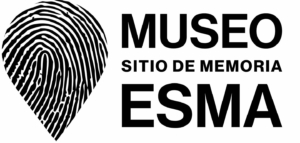The Public Conference «Heritage, Traumatic Memories and Identity», a discussion organized in conjunction with the National Human Rights Institution and the Office of the Ombudsman of Uruguay, was held on Tuesday, October 20. The goal was to establish a dialogue and reflect through the contributions of different fields of study and local and international experiences on the special link between the Spaces of Memory and the notion of Heritage, as well as how this influences the construction of identity in different societies. Participants included members of ICOMOS, an institution in charge of advising the UNESCO World Heritage Committee at the time of including a cultural property on their List.
The opening words were spoken by Alejandra Naftal, Executive Director of the ESMA Museum and Site of Memory, and Virginia Martínez, Coordinator of the Site of Memory Former SID in Montevideo. Both officials celebrated the articulation and implementation of joint activities as a way to address common problems in the region.
“These meetings are important in order to build a Latin American model regarding the treatment of our memories, our struggles, and our social, cultural and political heritage. Museums and heritages are still viewed as old things, connected to the past, but we need to ground those notions in order for societies to adopt them”, said Alejandra Naftal. “The Museum’s candidacy to UNESCO is a step in that direction”, she added and stressed the Secretary of Human Rights office and its head Horacio Pietragalla Corti’ support of the nomination project.
In turn, Adriana Careaga, a member of the ICOMOS International Administrative Board, called for deepening the frameworks for reflection on “emerging heritage categories”. “We are presented with the need to address frameworks for reflection that provide a new perspective on the World Heritage Convention created in 1972. We must continue to investigate the memorialization process as a fundamental need of societies to reconcile tensions and honor the victims, among other things. It is a task that presents many challenges ,» she said.
Leonardo Castriota, architect and vice president of ICOMOS International, focused his presentation on the relationship between Heritage and Human Rights: “For a long time they seemed distant issues, but thanks to internal changes in the conception of each one, today they are managed together. Conservation is now conceived as essential, not of the materiality of the spaces, but of their values. This change allows us to think about the two concepts together and about the ESMA Museum and Site of Memory as a World Heritage».
«Memory is a fact of the present and it is important to conceive it as a dynamic process, as a way in which we order the events of the past», said Raquel Lejtreger, an architect and visual artist who paid special attention to spatiality as an area of disputes, in connection to the topics of the meeting. “The territory is political, and the configuration of sites are the result of a both material and symbolic distribution of power. In this political scenario the space is drawn and redrawn taking into account the different sectors of society that act on it”, she said.
Representing the National Human Rights Institution and the Ombudsman’s Office of Uruguay, Mariana Risso provided a historic perspective of the challenges that her country faced when producing Historical Heritage from the so-called traumatic memories. “Unlike a monument”, Risso noted, “a site of memory is part of the same narrative of the place of conflict. It is a place that demands to discuss again and review the role we are giving to the memory of the present for the better protection of Human Rights ”.
María Turull, Technical Coordinator of the ESMA Museum and Site of Memory’s application to UNESCO, explained the journey they have made working on it. “The Site is defined as Heritage in two integrated aspects: as judicial evidence and as cultural heritage. The review of this duality made us reflect not only on the Museum but, by extension, on the general heritage condition of the sites throughout Argentina. This was very important in our search for consensus on these issues».
The event’s closure featured Mauricio Cohen Salama, General Coordinator of the Work Plan, and Mayki Gorosito, Coordinator of International Cooperation for the ESMA Museum and Site of Memory’s nomination before UNESCO. “The candidature is an opportunity to highlight the outstanding universal values of the Museum around the world. It is a historical memory that is Argentine, but also of all Latin America ”, expressed Gorosito. “The conditions that UNESCO requires to carry out the candidacy are favorable for us as an institution because they allow us to improve our performance when building consensus with many sectors. It is an extremely interesting experience that is allowing us to organize and deliver a clearer message about the civic-military dictatorship that ruled Argentina between 1976 and 1983, » added Cohen Salama.
The event was moderated by Pedro Delheye, president of ICOMOS Argentina, who finally highlighted the work around the candidacy. «From ICOMOS Argentina we greatly admire the work they have been doing and we support the application because of the importance it has for Argentina but also for the entire region», he closed.



